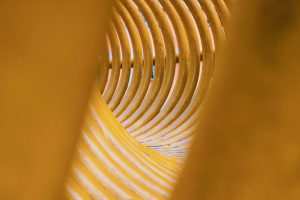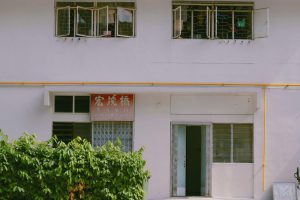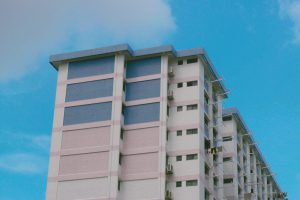Wow! So it is time to begin working on the 2nd project! How exciting.
So the neighbourhood that I got was Ang Mo Kio. When I got it, I was feeling pretty neutral about it. In terms of travelling, it was still quite accessible but as I continue thinking about the location, I realized I didn’t know much about it. The only association I had in mind with AMK was AMK Hub because my parents and I used to go there for late night movies. But other than that I knew nothing.
So the first thing I did was actually to go online to research some facts about AMK. Here are some I gathered.
- the name Ang Mo Kio literally means “red haired man’s bridge”. The name was altered in Chinese so that it would read “large and prosperous bridge” rather than “red haired man’s bridge”
- It is PM Lee’s GRC
- The AMK swimming complex at Avenue 1 won the 1986 architectural award for its unique “tetrahedral skylight” design
- 6 different neighbourhoods with streets that run perpendicular
- Food
However, even after trying to do my research, I wasn’t sure what I should focus on or if there is anything else I can explore. I decided to ask some of my church friends if they knew anything about AMK, but the general consensus were 1. Not sure 2. I don’t know 3. Somebody suggested the dragon playground and 4. recommended cafes. I was still feeling a little unsure because it seems like I don’t know much more compared to them but I decided to just see how it goes when I go for the site visit. So I had a few locations in mind – visiting the old dragon playground, visit hawkers, cafes (because apparently AMK has realllyyyy good food).
So Friday morning, before my Women’s Literature and the Contemporary lesson in the afternoon, I made my way down to AMK.
So the first place I visited was the dragon playground at block 571, and instantly, I noticed the colours!! The colours were popping and eye catching, really vibrant. Not only the playground but as I would subsequently realize to, the buildings. Don’t think I ever grew up with a playground like that because I moved to Punggol (a newer estate) when I was relatively young, though my dad was telling how my oldest sister used to play at one of these playground’s as a child. Man. To be honest, this was the first time I actually saw one up close, right in front of me, so it was really exciting. If only playgrounds are as exciting as these.









My next 2 stops were the different hawkers and wet markets. So an interesting fact that I found while researching for AMK is that it was one of the earlier estates in Singapore to be built by HDB in the 1970s. It is really big. And I think something that really caught my eye during the sight visit was that it was quite evident that its an old estate. The number of elderly’s I saw and even the buildings were buildings that we would never imagine modern Singapore building. The 2 story shop houses, mama shops, etc. The colours are everywhere and I think that is a key trait that I picked out. Also, something else I noticed is that AMK is really geometric, the buildings and everything seem very rectangular-ish, alot of straight lines. Something that I observed while I was walking around the hawker centres and wet markets is definitely the sense of familiarity. People who were buying at the shops seem to be old timers, all lost in their conversations. The elderly people who frequent there are probably regulars.












(Even the food has such wonderful colours)
The colours on the HDB buildings are amazingggg! The colours are so great and even in the HDBs, you can tell that its different from the modern ones. Something really charming and great about them.





Another thing that I decided to go was to go to one of the cafes in AMK, because apparently there are quite a few in the area. I only had the time and money for one of the cafe called Double Scoops. I thought it was really interesting because AMK is quite an old estate and there is also a hint of modern-ness in some of these cafes that are popping up.


Had a lot of fun visiting AMK and it was definitely different from what I had in mind while doing my secondary research.
———————— After group Consultation————————-
What I had in mind before group consultation was focusing on this “oldness” and yet really charming part of AMK. However, my classmates who are more familiar with AMK brought up the point on how AMK is a transitioning estate. While there are many elderly people living in AMK, there are also a number of childcares and family oriented facilities that are popping up around AMK. Unfortunately, I didn’t have the time to go down again but I definitely didn’t want to misrepresent AMK so I decided to go with the idea of doing an infographic that shows how AMK is a transitioning estate.
My idea was to do a map of AMK, but I wanted to elevate that idea and so instead of just putting the elements there on one map, my inspiration for my final infographic was to do a “Spot the difference”, of the past and current day.
Here are some reference images for the idea of doing maps.





PROCESS:
Hence, I went to look at google maps and pick out some of the prominent landmarks in AMK (like AMK hub) and started my research from there. I realized that AMK in the 1980s was really bustling and it was also labelled “Ang Mo Kio New Town” because it was one of the newest satellite towns in Singapore and they were trying out many new things when it was built. Hence, I felt like 1980s was iconic for AMK and also memorable, kinda like its glory days.
I found out that in the 1980s, AMK had this town centre where malls were there and was the hub of that time. However, it was demolished and it is now AMK hub.



However, even after adding in more elements, I felt like the whole infographic was really dull, which was definitely not what I got from AMK when I was there. So I decided to change the colour scheme for the piece to make it more vibrant.
 ( I think the colours on the right works much better and it is definitely more vibrant than the original!)
( I think the colours on the right works much better and it is definitely more vibrant than the original!)
FINAL INFOGRAPHIC :

I added in visual cues like the old bus stops and old buses to further show the 1980s. The rectangular boxes around actually represented the HDB’s in AMK. I think what I wanted to show in my infographic was how much history AMK actually has, something that I didn’t really know before the project, but also how AMK today is a great representation of 3 generations in one estate, with the elderly’s that have been there for many years, the cafes (that represents youths) and childcares that represent both families and also another generation. I think AMK is quite intergenerational, more so than some of the estates in Singapore and that could be a possible thing I explore more in my ZINE.
Reflection
After the submission, I was thinking about how I could have added more information into the infographic, maybe about the history of the places. But I hope that it was clear enough that there is this transition in AMK. 🙂